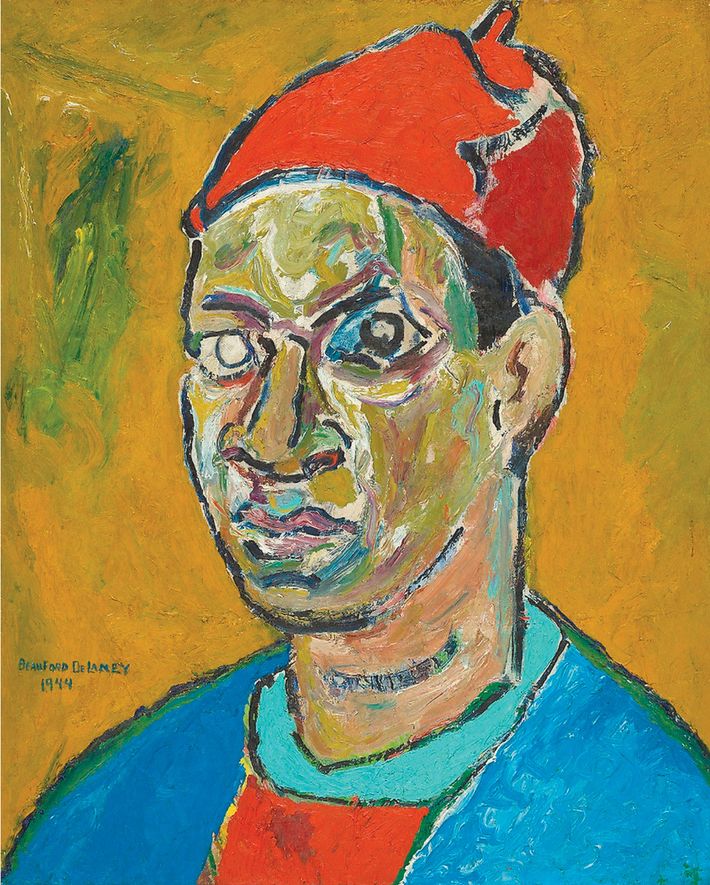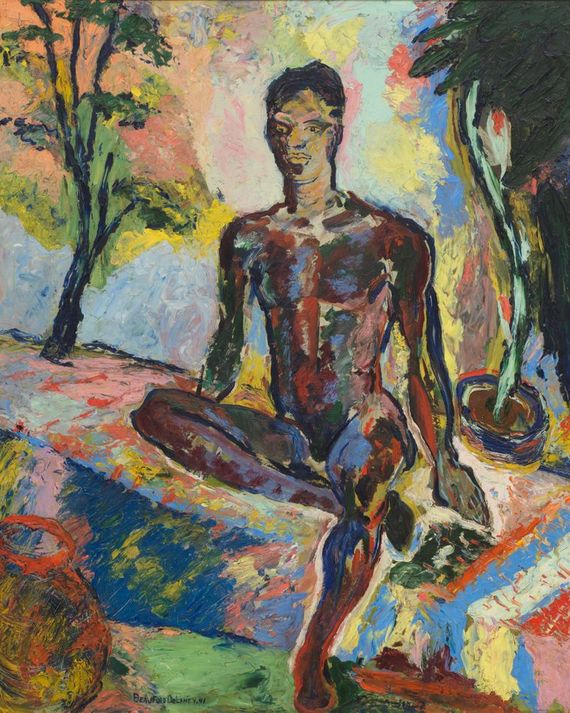Fame, at least lasting fame — the your-work-goes-down-in-history kind, often accompanied by fat royalty payments — is a club that thinks of itself as an unbiased meritocracy, blind to everything but aesthetic innovation and popular success. It’s never quite worked out that way. When we look at the past, we still see generations of great talents who never quite got their due critically or commercially, many of them left relatively unsung. In this ongoing series, our critics pick artists they feel remain underappreciated and tell their stories and sing their praises.
“He is amazing … this Beauford,” the novelist Henry Miller wrote of his lifelong friend Beauford Delaney in a 1945 essay that helped make the painter (whom Miller called a “black monarch” capable of making “the great white world … grow smaller”) a legendary attraction in Greenwich Village. So much so that people often gathered outside Delaney’s building at 181 Greene Street, where he lived and worked on the top floor — a walk-up lit only by a wood-burning potbellied stove.
Born in Knoxville, Tennessee, in 1901, Delaney migrated north to Boston in 1923 to study art, then moved to New York in November 1929, days after the onset of the Great Depression. That first day in New York, he slept on a Union Square bench, where someone stole his shoes. The next morning, he set out on foot, in newly bought shoes, to walk uptown to Harlem. When he reached Central Park, he stopped because of his severely blistered feet.
Things had never been tougher for American artists — let alone black ones. Art schools didn’t take black artists, and independent-studio classes banned black artists from figure-drawing sessions with white models. Undaunted, Delaney began drawing at a midtown dance studio. Somehow, his career took off almost overnight. Four months after he arrived in New York, an article appeared in the New York Telegraph about portraits Delaney had done of dancers and society figures.
He met and charmed everyone. A list of his friends and acquaintances includes Stuart Davis — his closest painter compatriot — W.E.B. Du Bois (whose portrait he did), Duke Ellington, Louis Armstrong, Jacob Lawrence, Alfred Stieglitz, Georgia O’Keeffe (who did a portrait of him), Edward Steichen, Dorothy Norman, Anaïs Nin (who intimidated him), Jackson Pollock, and Jean Genet. His closest lifelong friend, however, was James Baldwin — who, while fleeing a strict father at 16, looked up Delaney in the Village. He later called the artist his “principal witness.” Delaney was a kind of surrogate nurturing father to the writer. Judging by his 1941 Dark Rapture (James Baldwin), a steamy nude portrait of the 16-year-old writer (as well as from subsequent Baldwin portraits over the decades), Delaney seems to have been in love with the lithe young man 22 years his junior.
In October 1938, more than a decade before Pollock graced the same pages, Life magazine featured Delaney, picturing him beatifically smiling at the Washington Square Outdoor Art Exhibit. The caption read, “One of the most talented Negro painters.” Yet by the time he died in 1979, Delaney was alone, alcoholic, hallucinating, paranoid, and penniless in a Paris psychiatric hospital. What started as a great American story is now a near absence in the history of American art and an American Dream forestalled.
I love his work — especially his highly colored, optically intense, dense figurative paintings. He is almost an exact contemporary of, and the New York counterpart to, another great painter-portraitist, an artist who captured the power and magic of being poor stylishly, who lived on the margins but eventually came to be recognized as a visionary: Alice Neel. Delaney should be regarded as such as well.
Through the 1930s and 1940s, while most American artists were either being fifth-rate Cubists, regionalists, or academics or desperately looking for ways around Picasso via Surrealism, Delaney made his own thoroughly contemporary way. In street and park scenes, still lifes, and portraits, he built upon the work of his good friend Davis, arriving at his own compact, flat fields of creamy, opaque color. His sense of visual, jigsawing geometry and strong, graphic distillation of structure is second only to Davis’s. Delaney’s work, however, has a much more human aura, atmosphere, and arc, almost to a mystical degree, seen only in Marsden Hartley.
So why has Delaney been disappeared from collective memory? Partly, it is the racial bias of art history, which, among other things, meant that even while he was celebrated, it was less as a painterly equal to his contemporaries than as some kind of Negro seer or spiritual black Buddha. And in 1953, at the age of 51, Delaney left New York at perhaps the worst possible time. When other American artists, like Jasper Johns, Robert Rauschenberg, Cy Twombly, John Cage, and Merce Cunningham, were meeting and staying up late together (many of them open and uncloseted in their sexuality), Delaney was in Paris, where Baldwin had told him he could escape the long American night of racism. Baldwin was right, but Delaney struggled with French and became even more isolated. Twombly, Baldwin, and Miller returned often to New York, while Delaney never did. So he never got to rejoin the conversation.
By the 1960s, Delaney’s abstraction was more connected to the French Art Informel — a primarily European response to Abstract Expressionism — and his paintings, influenced as they were by Monet’s Water Lilies and Turner’s glowing color, had few of the ironic, systemic, direct qualities of Pop Art and minimalism. At a distance, Delaney’s work seemed passé — an artist painting in a void, outside the canon.
*This article appears in the January 6, 2020, issue of New York Magazine. Subscribe Now!






